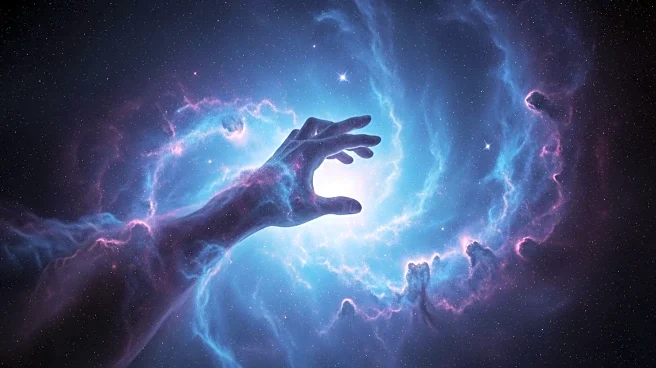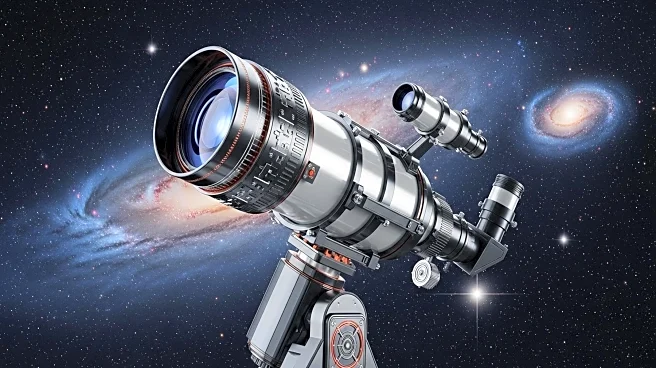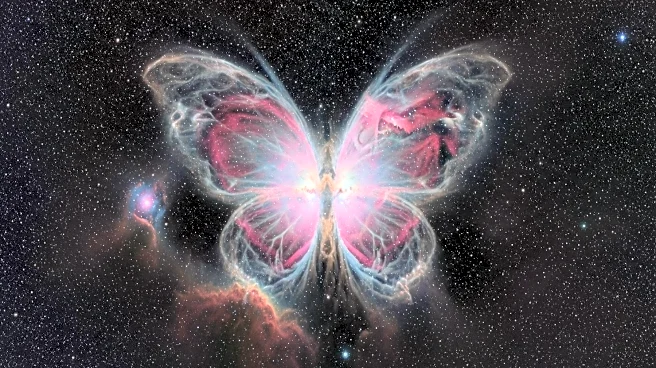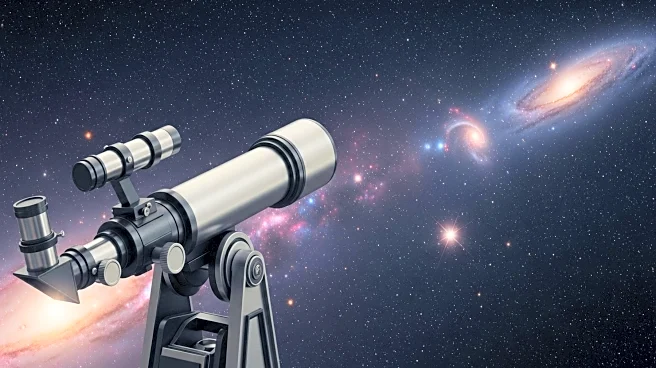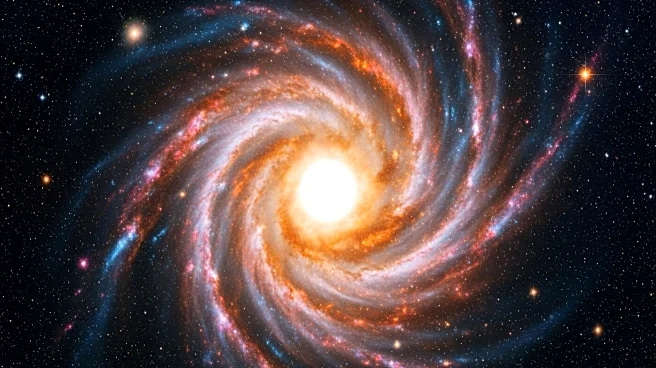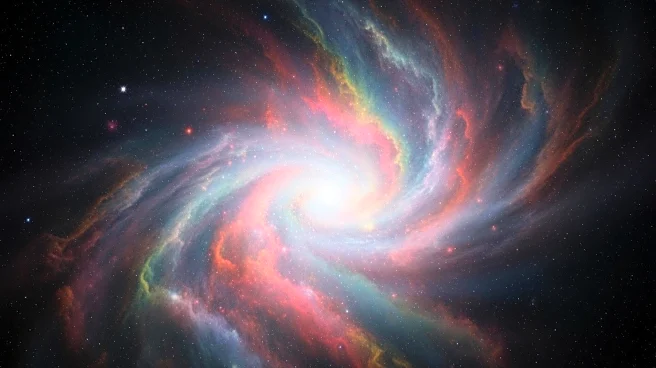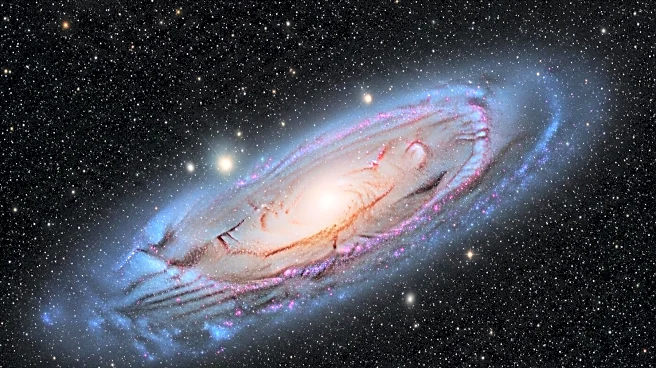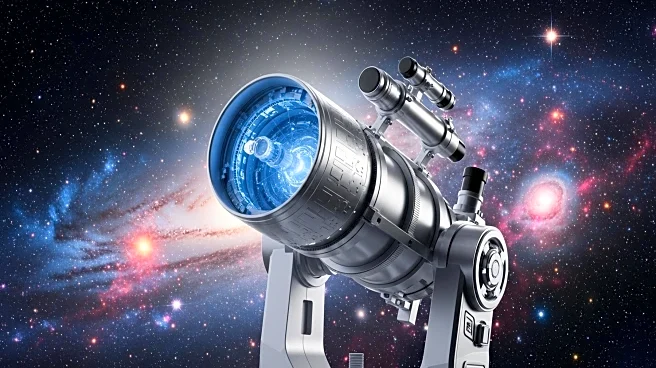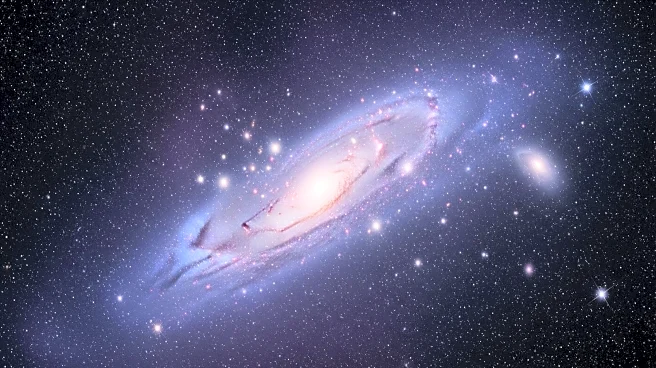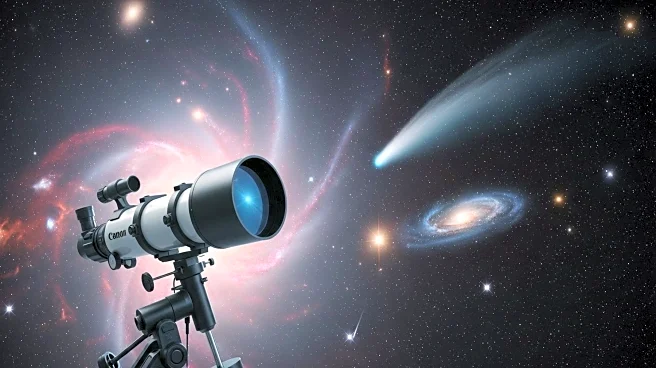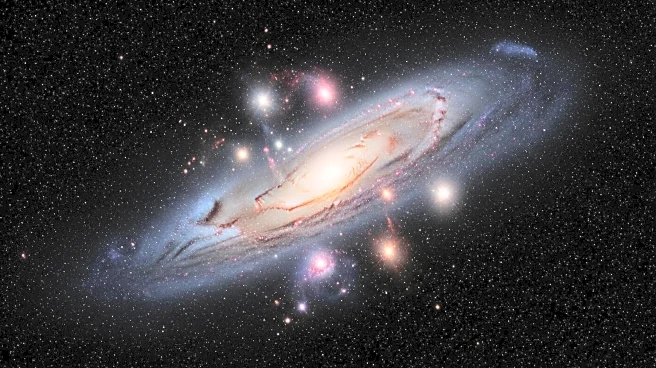What's Happening?
NASA's Chandra X-ray Observatory has unveiled new insights into a pulsar and its surrounding nebula, known as MSH 15-52, which resembles a human hand. The pulsar, B1509-58, is a rapidly spinning neutron star responsible for creating the nebula. Recent observations have combined X-ray data from Chandra with radio data from the Australian Telescope Compact Array, revealing complex structures and filaments aligned with the nebula's magnetic field. These findings suggest interactions between the pulsar's particle wind and the supernova's debris. However, researchers are puzzled by the absence of radio signals at certain X-ray boundaries, indicating unique features not found in other young supernova remnants.
Why It's Important?
The discovery of these unusual features in the cosmic hand nebula provides valuable insights into the behavior of pulsars and their surrounding environments. Understanding the interactions between pulsar winds and supernova debris can enhance knowledge of cosmic phenomena and contribute to the broader field of astrophysics. These findings may also inform future research on the formation and evolution of similar structures, potentially impacting theories related to neutron stars and supernova remnants.
What's Next?
Further research is needed to unravel the complexities of the interactions between the pulsar wind and supernova debris. Scientists aim to explore the unique features of MSH 15-52 and RCW 89, seeking answers to open questions regarding their formation and evolution. Continued observations and data analysis will be crucial in advancing understanding of these cosmic phenomena.
